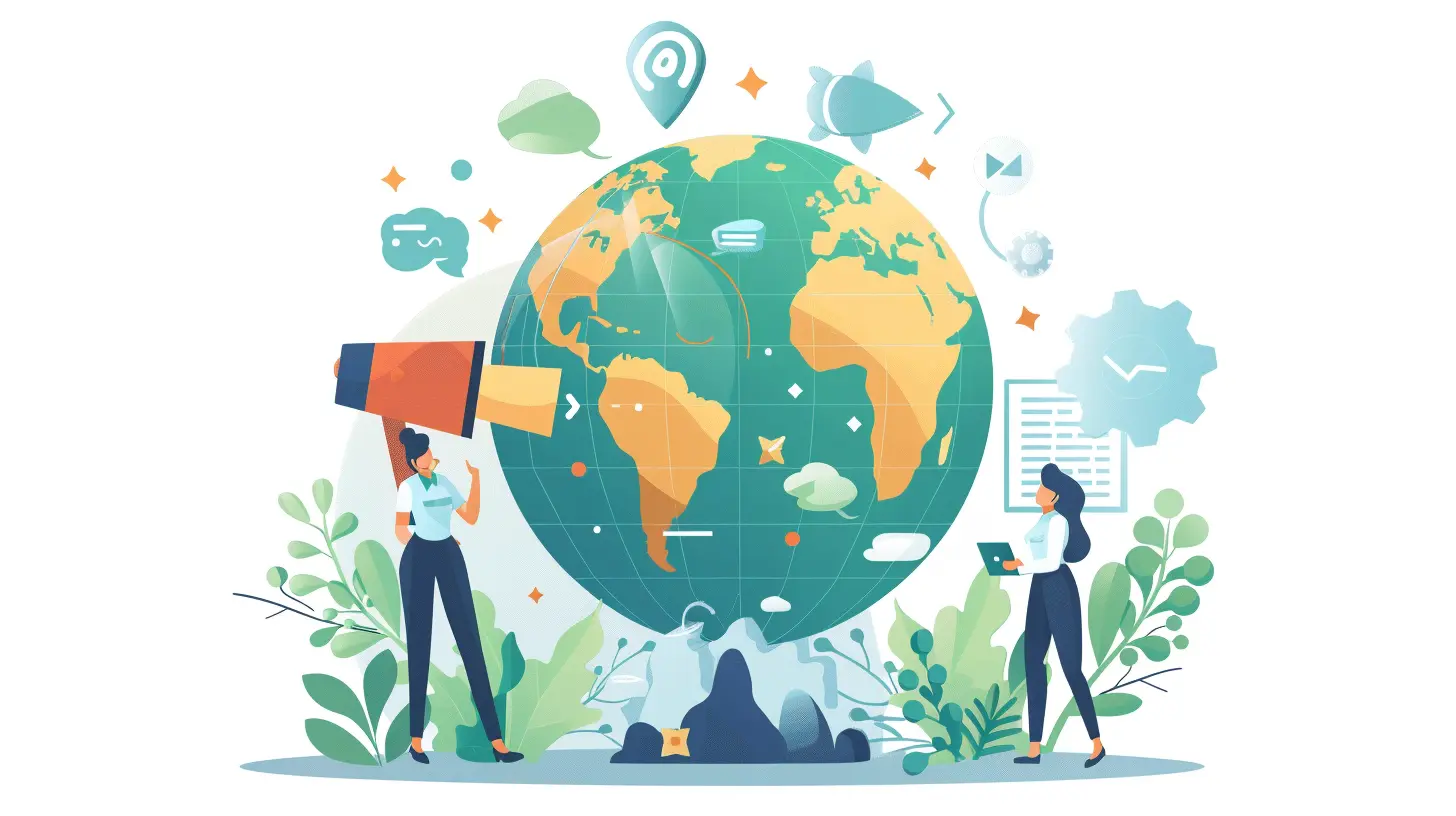The Importance of Localization in Your Global Content Strategy
6 October 2025
If you’re looking to grow your business across borders, you’ve probably heard the term “localization” tossed around. And if you're serious about reaching international markets, it's not just a buzzword—it's the real deal. So pull up a chair, and let’s dive into why localization should be front and center in your global content strategy.

What Is Localization, Anyway?
Before we go full steam ahead, let’s clear up what localization actually means. It’s not just translating your website content or marketing copy into another language. That’s translation—important, yes, but only a piece of the puzzle.Localization goes deeper.
It’s adapting your content to align with the cultural, linguistic, and social expectations of your target audience. That means tweaking your tone, imagery, idioms, currencies, units of measurement, date formats—literally everything that makes your content feel like it was made just for them.
Think of it like this: if translation is changing the words, localization is changing the experience.

Why You Can’t Ignore Localization in a Global Strategy
Let’s say you launch a sleek website in English, but you want to reach customers in Japan, Brazil, or Germany. If all you do is translate the words, you might be missing out on what really connects with those audiences.Here’s why localization isn’t optional—it’s essential.
1. Builds Trust and Credibility
People buy from brands they trust. That’s universal. If your content uses local expressions and aligns with cultural expectations, your audience is more likely to feel understood.Ever seen a website with clunky, awkward translations that make you cringe? It doesn’t exactly scream “professional,” right?
Localization tells your audience: “Hey, we get you. We’re here for you.”
2. Boosts Engagement (Big Time)
Localized content performs better. Period. Users engage more when content speaks their language—literally and figuratively.Imagine reading a website that uses your local slang, references your country’s holidays, and even shows familiar landmarks. You’d stick around longer, right? That’s because it feels relatable. It feels human.
And more engagement means better SEO metrics, longer session times, and ultimately—more conversions.
3. Improves SEO in Global Markets
Speaking of SEO: search engines love localized content.When you localize your content, you’re using the keywords and search terms people actually use in their region. That means you’re more likely to show up in search results, drive organic traffic, and lower your ad spend.
It’s not just about ranking globally—it’s about ranking locally in each market.
You wouldn’t search for “sneakers” in the UK—you’d search for “trainers.” That’s the level of nuance localization brings to your SEO game.
4. Increases Customer Satisfaction
Happy customers come back. And one of the fastest ways to make a customer smile is to make them feel at home.If your content is easy to understand, relevant to the user, and culturally sensitive, your customers are going to enjoy interacting with your brand. It sets the tone for great customer service—before they even hit the checkout button.
Plus, localized support documents, FAQs, and how-to guides reduce confusion and frustration. That’s a win.
5. Gives You a Competitive Edge
Let’s face it—global markets are crowded. But most companies still fail to adequately localize their content.By investing in quality localization, you’re setting yourself apart from the pack. You’re not just entering a market—you’re showing up as if you belong there.
That’s a serious advantage.

Common Misconceptions About Localization
There are a few myths floating around out there, so let’s bust them real quick.“Translation is enough.”
Nope.Translation is about converting words. Localization is about creating context. Without it, your content might be technically correct but culturally awkward—or even offensive.
“It’s too expensive.”
Sure, localization has costs. But so does losing potential customers because your message doesn’t make sense to them.Think of it as an investment, not an expense. The return? Increased sales, expanded reach, and loyal customers around the globe.
“English is the business language.”
Tell that to the 75% of consumers who prefer to buy products in their native language. Global means everyone, not just English speakers.
What to Localize in Your Content Strategy
Okay, so now you’re on board. But what exactly should you localize? Here's a handy checklist:Website Content
Don’t just localize the homepage—go deep. Product pages, landing pages, blog posts, reviews, and call-to-actions all need to feel native to the end user.Multimedia
Videos, images, and infographics should reflect the local aesthetic. That might mean changing clothing styles in images or swapping out background music in a video.Keywords and SEO
Use local tools like Google Keyword Planner, SEMrush, or Ahrefs to do region-specific keyword research. People don’t just speak differently—they search differently.Social Media Content
Different cultures use social media platforms in different ways. Customize your posts, hashtags, and responses depending on the region.Email Marketing
Ever received an email that clearly wasn’t written for you? Yeah, not a vibe. Customize greetings, offers, and language based on where your customer lives.Customer Support and Documentation
Make sure your FAQs, help docs, and customer support channels are accessible in the local language and reflect the local context.The Process: How to Actually Localize Your Content Strategy
Now for the fun part: how do you actually do this?Here’s a simplified roadmap:
Step 1: Do Your Homework
Start with market research. Understand your audience—what makes them tick, what they value, and how they communicate.Use tools like Google Trends, Facebook Audience Insights, or good ol’ surveys to get real data.
Step 2: Build a Localization Team
Don’t rely solely on automated tools. Hire native speakers, localization experts, or agencies that understand the local culture.A human touch goes a long way. You want someone who can say, “That slogan might not go over well in Spain” before you roll out a campaign.
Step 3: Create a Global Content Plan
Develop a centralized content strategy with room for local adaptation. Think of it as the “skeleton” of your content, with local teams adding the “flesh” depending on the region.Step 4: Use Tech to Your Advantage
There are awesome tools out there like Smartling, Lokalise, and Transifex that streamline the localization process and help manage multilingual content.Step 5: Test and Optimize
Once your content is live, monitor its performance. A/B test different versions to see what works best. And don’t be afraid to pivot if something falls flat.Adaptation is the name of the game.
Real-World Examples of Successful Localization
Nothing brings a point home like a few real-world wins.Netflix
Netflix is the king of localization. Their platform looks totally different across countries. From subtitles to dubbing, to content suggestions tailored to local tastes, they do it all. That’s how they became a global entertainment giant.Coca-Cola
Coca-Cola doesn’t just translate “Open Happiness.” They tailor entire campaigns to resonate locally. In China, they emphasized family values. In the Middle East, they adjusted their imagery to align with cultural norms. Smart.Airbnb
Their localized listings, customer service options, and even local experiences are tailored for each market. It makes users feel like they’re getting a personal travel concierge.Final Thoughts: Localize or Get Left Behind
Global expansion is more than just moving your content across borders. It’s about building real, meaningful connections with your audience—wherever they are.Localization is your secret weapon in making that happen.
It makes your brand feel less like a foreign company and more like a neighbor next door. And in a world where authenticity rules, that's a powerful place to be.
So the question isn’t, “Should I localize my content?”
It’s, “Can I afford not to?
all images in this post were generated using AI tools
Category:
Content MarketingAuthor:

Lily Pacheco
Discussion
rate this article
1 comments
Zephyra McKee
Localization isn't just about translating words—it's like giving your content a passport! Without it, your message might get lost in translation, or worse, end up in a one-size-fits-all sweater!
October 14, 2025 at 10:35 AM


